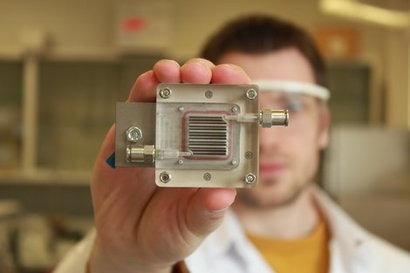
The solution, based on a device that must only be exposed to light in order to function, satisfies two social needs - purifying air and generating renewable energy. It is based on a membrane and the use of specific nanomaterials which are capable of producing hydrogen gas from polluted air.
“We use a small device with two rooms separated by a membrane” said Professor Sammy Verbruggen (UAntwerp/KU Leuven). “Air is purified on one side, while on the other side hydrogen gas is produced from a part of the degradation products. This hydrogen gas can be stored and used later as fuel, as is already being done in some hydrogen buses, for example”.
Professor Verbruggen added that in the past the cells were mostly used to extract hydrogen from water, but that scientists have now discovered that it is possible to do the same thing, with even more efficiency, with polluted air. It seems to be a complex process, but actually isn’t. The processes underlying the technology are similar to those found in solar panels, but the difference is that power is not generated directly but stored as hydrogen gas.
The scientists are currently working on a scale of only a few square centimetres but at a later stage they would aim to scale up the technology to make it applicable at an industrial level. They also want to use sunlight more efficiently in order to trigger the reactions.
For additional information:

